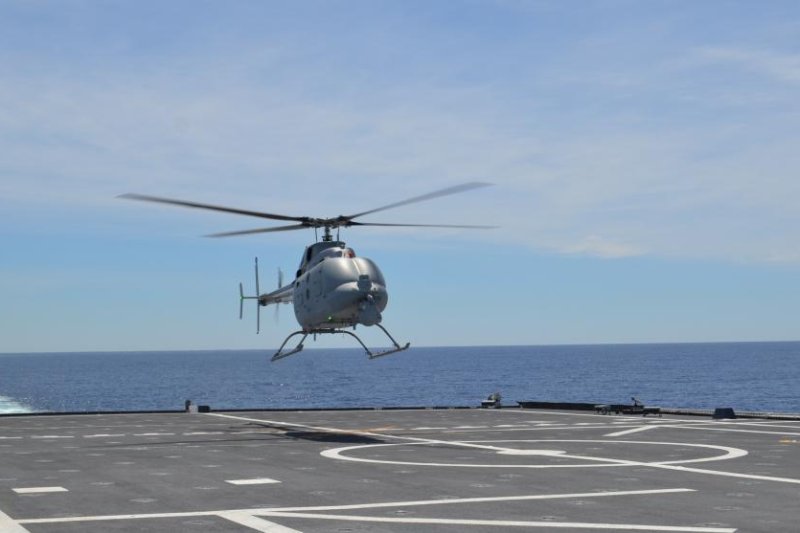April 17 (UPI) -- The MQ-8C Fire Scout, an unmanned helicopter being built for the U.S. Navy, took its first flight from a littoral combat ship earlier in April.
The sea trials took place off the coast of California aboard the Independence-class vessel USS Montgomery, and follows an earlier flight test aboard guided-missile destroyer USS Jason Dunman. Manufacturer Northrop Grumman says the event puts the aircraft one step closer to full operational capability.















